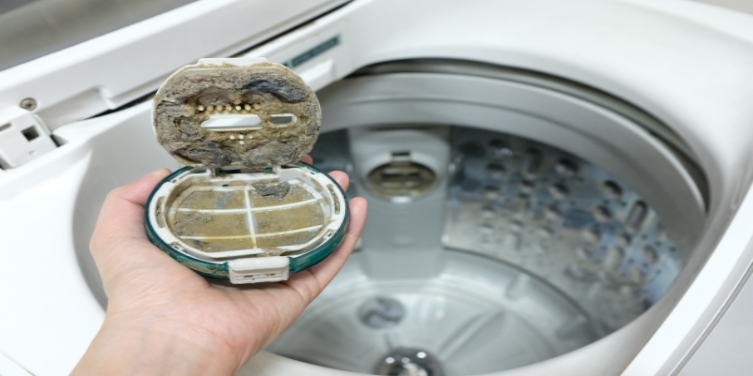How to Clean a Washing Machine

Just like any other appliance, a washing machine can get dirty after enough use. When this happens, you need to find a way to clean it. Keeping your washing machine clean improves its efficiency and lifespan.
Thankfully, you don’t have to deal with or replace a dirty washing machine. You can clean it in a few hours using some common household items. We’ll tell you how to clean a washing machine and answer a few frequently asked questions about this process:
- How to Clean a Top-Loading Washing Machine
- How to Clean a Front-Loading Washing Machine
- How to Clean a Washing Machine FAQs
How to Clean a Top-Loading Washing Machine
Top-loading washing machines are fairly easy to clean. In fact, the cleaning process is virtually identical to doing a load of laundry. Here’s a quick step-by-step guide detailing how to clean a washing machine that loads from the top:
- Run the machine on the hottest setting: Without adding any clothes to the washing machine, pour in four cups of distilled white vinegar and run the machine on its hottest setting.
- Stop mid-cycle: Once the machine is full of water, pause it to unlock the door. Leave the machine paused for at least one hour so the vinegar can penetrate and loosen any buildup. After an hour has passed, let the cycle finish
- Add baking soda: Once the cycle is complete, pour a cup of baking soda into the machine drum. Next, put the unit on the hottest setting and start another wash cycle.
- Allow the unit to dry: When the second wash cycle is finished and the machine has drained, open the door and let the machine air dry for at least three hours.
How to Clean a Front-Loading Washing Machine
Despite performing the same function, front-loading washing machines require a different cleaning process altogether. Here’s a four-step guide on how to clean a washing machine with a front-loading setup:
- Run the machine: If your washing machine is fairly new, it should have a self-cleaning cycle. If it does, simply add the amount of bleach specified in the ownership manual and run this cycle. For machines that don’t have a self-cleaning setting, add ½ cup of bleach or a specialty cleaner, and then run a regular wash cycle with hot water.
- Run an extra rinse and spin cycle: After running the initial cleaning cycle, run one more rinse and spin cycle to wash away any residual traces of bleach.
- Wipe down the dispenser drawer: Take out the dispenser drawer or pull it as far out as it goes and wipe it down with a washcloth. Use a toothbrush to remove any stuck-on gunk. Finally, dry the dispenser drawer and put it back in place.
- Clean the rubber gasket and drum by hand: Your final task is to use a washcloth to wipe down the rubber seal around the washing machine’s door. You can also wipe down the inside of the drum. Once you’re done, leave the door open to let it dry out.
How to Clean a Washing Machine FAQs
How do I stop my washing machine from smelling bad?
After years of contact with soap buildup and dirty clothes, your washing machine will eventually start to smell. You can eliminate this odor using baking soda and vinegar.
To do this, run a hot cycle with two cups of distilled white vinegar. After the cycle finishes, run a second cycle with half a cup of baking soda. This method works for both front-loading and top-loading washing machines.
After you’ve done this, take a washcloth and wet it with some soapy water. Carefully run the cloth along the rubber gasket near the door and along the entirety of the drum. Afterward, you can spray some distilled white vinegar onto a microfiber cloth and wipe down the inside and outside of the machine. Finally, let the washer air dry for a few hours.
Why do washing machines get dirty?
Washing machines clean dirty clothes day after day. The dirt and oils that were once in your clothes have to go somewhere. Unfortunately, one place they tend to build up is in your washing machine.
Soap scum buildup can also take your washing machine from sparkling clean to filthy in a matter of months. Wiping the drum down after each cycle can prevent this from happening.
Lastly, if you have hard water, it can lead to limescale buildup inside of your washing machine. We recommend installing a water softener to minimize the impact of hard water.
Call Mr. Rooter Plumbing for Help with All Your Plumbing Needs
Now that you know how to clean a washing machine, you can keep your clothes clean without worrying about mildew. If you have other plumbing problems you’d like to resolve, Mr. Rooter is here to help. We can assist with appliance setup, drain clogs, water softener installation, and more.
Click the button below and enter your ZIP code to schedule a service with your local Mr. Rooter Plumbing.
 Click to call
Click to call


